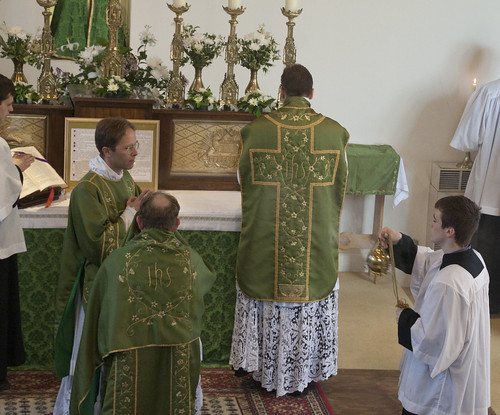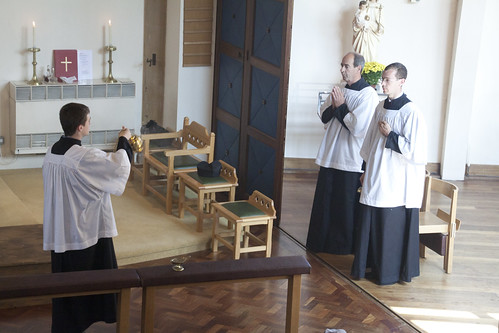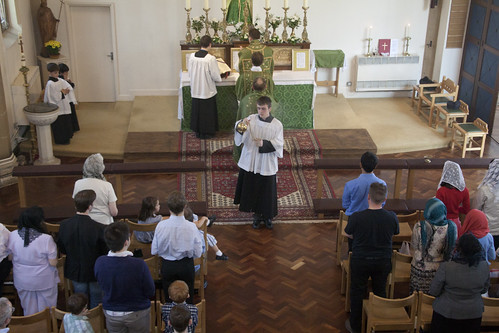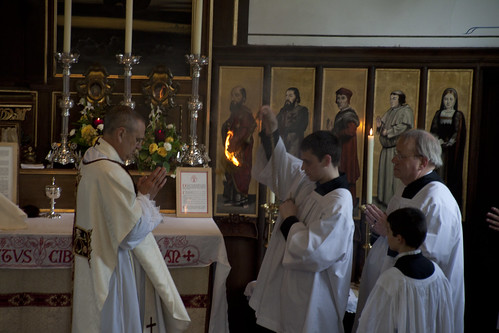First, and with great ceremony, the celebrant incenses the oblata, the host and the chalice, then the Cross and the Altar, with the assistance of the deacon. Then the deacon, with the assistance of the thurifer, incenses first the celebrant, then any clergy there may be in choir, and then the subdeacon (who is holding the paten with the humeral veil). Then the thurifer takes the thurible and incenses the deacon, then the MC, then the acolytes, and then the congregation.

(Thurifer incensing the deacon.)
In incensing the oblata, the celebrant is giving honour to Our Lord, who is about to make Himself present in them. The celebrant honours Him also in the Cross and the Altar. The celebrant is then himself honoured by the deacon, followed by other priests present in choir and the subdeacon (who is liturgically a subdeacon, even if he is actually a Monsignor!). Since the Deacon cannot incense himself, it falls to the thurifer to do this, followed by the remaining ranks of people present: MC, acolytes, and the faithful.

(Thurifer incensing the acolytes.)
In this way is the liturgical hierarchy emphasised: first God, and then the ranks of the clergy and others according to their liturgical function. Into this hierarchy relics or sacred images exposed on the altar for the occasion are added, as are on occasion especially important clerics (if a Bishop is present) or laity (if a Catholic monarch were present, for example). The lower ranks receive fewer swings of the thurible.

(Thurifer incensing the congregation.)
In doing this we witness sacred ordering of the offices, not of the individuals holding the offices, and it is the offices not exactly of the Christian society, but of the Mass. In Christian society a bishop would outrank the simple priest who is celebrant, but here we have a ranking of function of the liturgy just now taking place: in this Mass the celebrant has a more central role than a bishop in choir. The various functionaries at the altar have importance, and honour, just in so far as they have a role in the service of the Altar. The worthiness or otherwise of the individuals is not now at issue: we are dealing with an objective order of function.
The word 'hierarchy' means a 'sacred order'. The sacred order in a Solemn Mass, of which we see a simplified version in a Missa Cantata, is a glimpse of the sacred order of the heavenly liturgy. This is just one small way, in which the thurifer plays an important role, that the Traditional liturgy communicates the grandeur both of God and of the sacred action taking place on the altar.
(Photos from a Solemn Mass celebrated by Fr Marek Grabowski FSSP in St William of York. See the full set of photos here, and a post about the Mass here.)

